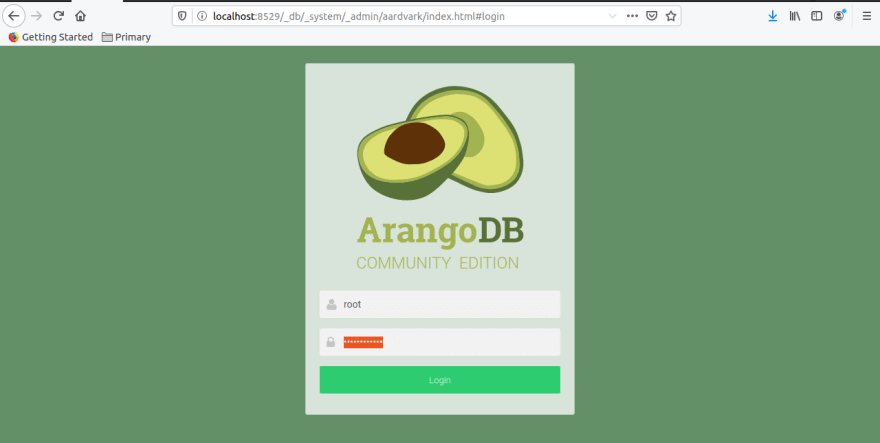

ListView( // change this to ListView. Column(children: [ // and this do not need Height: MediaQuery.of(context).height*0.8, // add this line It also has AQL annotation, which runs a query and returns to the object result.FloatingActionButton: FloatingActionButton(Ĭhild: Icon(Icons.create, color: ey), It will then be implemented automatically. It has backing from both ArangoDBTemplate (a template for ArangoDB operations), ArangoDBRepository (which keeps the Repository behavior), and an interface with methods already defined, and allows creating query methods. JNoSQL supports ArangoDB behavior, mainly AQL with arangodb-extension. public class App3 AQL: 1 Language, Multiple Kinds of NoSQL It is applied in the repository interface. The most straightforward and scalable type, the key-value, usually cannot be found just from the key, a field annotated with Id. This means that ArangoDB won't work for graph databases if ArangoDB does not support Tinkerpop. On the graph side, JNoSQL works with Apache TinkerPop. class Hero implements Serializable String String String Integer Set class Villain implements Serializable String String name The annotations look like JPA, making it more comfortable for a Java developer who's already worked with SQL technology. after the database was stopped, invoke.\usr\bin\arango-secure-installation. To re-gain access to the database, stop the ArangoDB database service using. In this article, there are two models: a Hero and Villain. Open a CMD-Window in your ArangoDB installation directory. To integrate Java and ArangoDB, we're going to use Eclipse JNoSQL, an open-source project that easily bridges JavaEE over the NoSQL database. How to Install Using Dockerĭocker run -e ARANGO_NO_AUTH=1 -d -name arangodb-instance -p 8529:8529 -d arangodb/arangodb JavaEE vs. To get more comparison between them, click here. SELECT * FROM users WHERE active = 1 //SQLįOR user IN users FILTER user.active = 1 RETURN user //AQL Despite such differences, anyone with a SQL background should have no difficulty in learning AQL. This query looks like a SQL language, though there are slight differences, such as FILTER instead of WHERE. In ArangoDB, a developer can store data as key/value pairs, graphs, or documents, and access any or all of the data using a single declarative query language thanks to AQL, or ArangoDB Query Language. VelocyPack (VPack): A binary JSON that ArangoDB uses to store its data that is self-contained, is compact, covers all of JSON plus dates, integers, binary data, and arbitrary precision numbers, can be transferred to JSON and from JSON rapidly, and avoids too many memory allocations.ĪrangoDB Query Language (AQL): 1 Language, 3 Databases.Fault tolerance: ArangoDB has an efficient fault-tolerance system that is enabled by default.


When working with single-model databases, this can lead to various operational challenges. Reduced operational complexity: In the concept of polyglot persistence, the goal is to use the best tools for whatever jobs you may have.ArangoDB scales both vertically and horizontally, and if your performance needs to decrease, you can as quickly scale down your back-end system to save on hardware and operational requirements. With ArangoDB, you can quickly react to increasing performance and storage needs by independently scaling with different data models. Simplified performance scaling: Applications grow and mature over time.Consolidation: As a native multi-model database, ArangoDB minimizes the components that you need to maintain, reducing the complexity of the technology stack for your application or usage.A multimodel database handles two or more NoSQL types in just one database infrastructure. Based on this, let's introduce ArangoDB: an open-source, multimodel database with support for key-value, document, and graph databases on an Apache V2 license and written mostly in C++.Ĭheck out the useful features extracted from its documentation: A multimodel database might be fit to solve this kind of problem. With this in mind, having more databases to handle and more infrastructure and ops makes both software and hardware more complicated. The rules for applications have changed in terms of business and complexity, so more than one NoSQL type is often required. As the graph below shows, there is a balance in terms of model complexity more complicated models are less scalable. NoSQL databases have four types: key-value, column, document, and graph, every kind with specific persistence structures to solve particular problems. ArangoDB is a NoSQL database and a multi-model database.


 0 kommentar(er)
0 kommentar(er)
